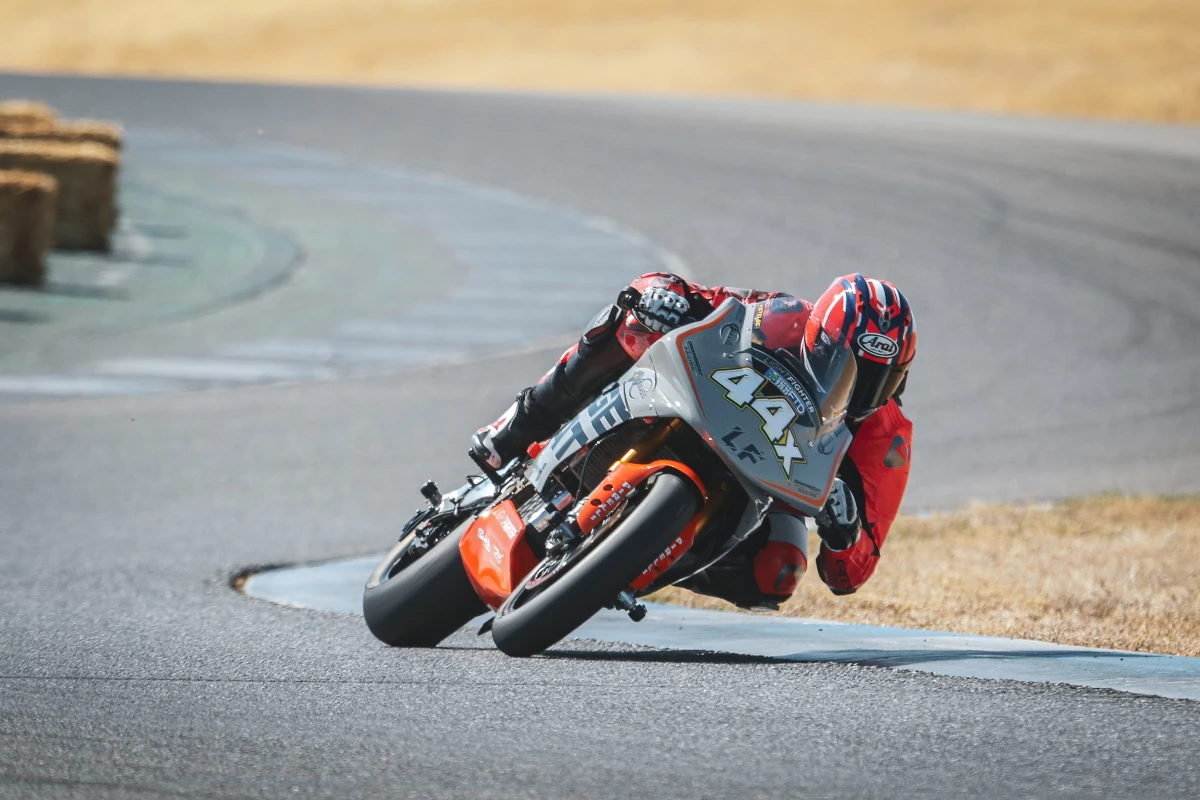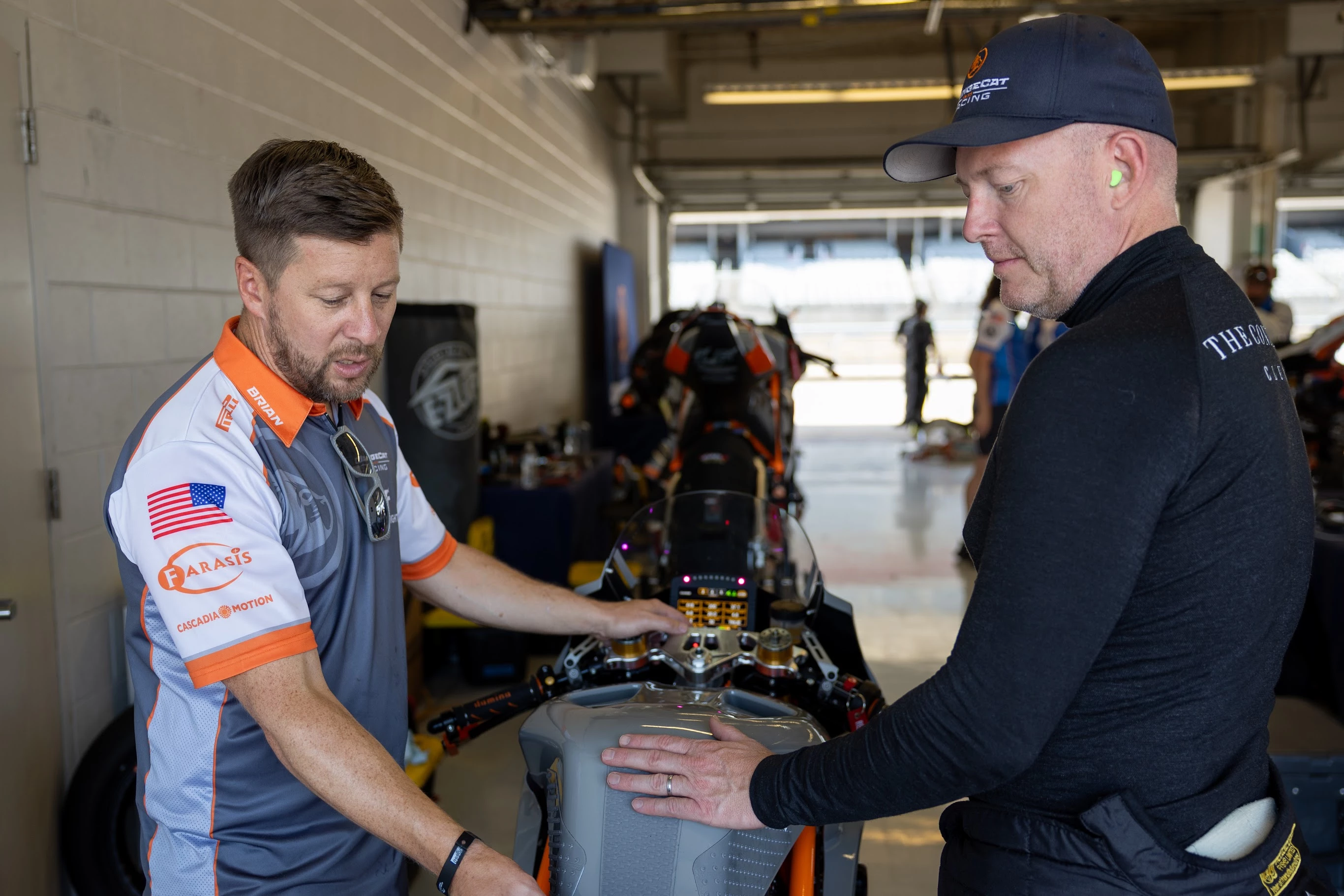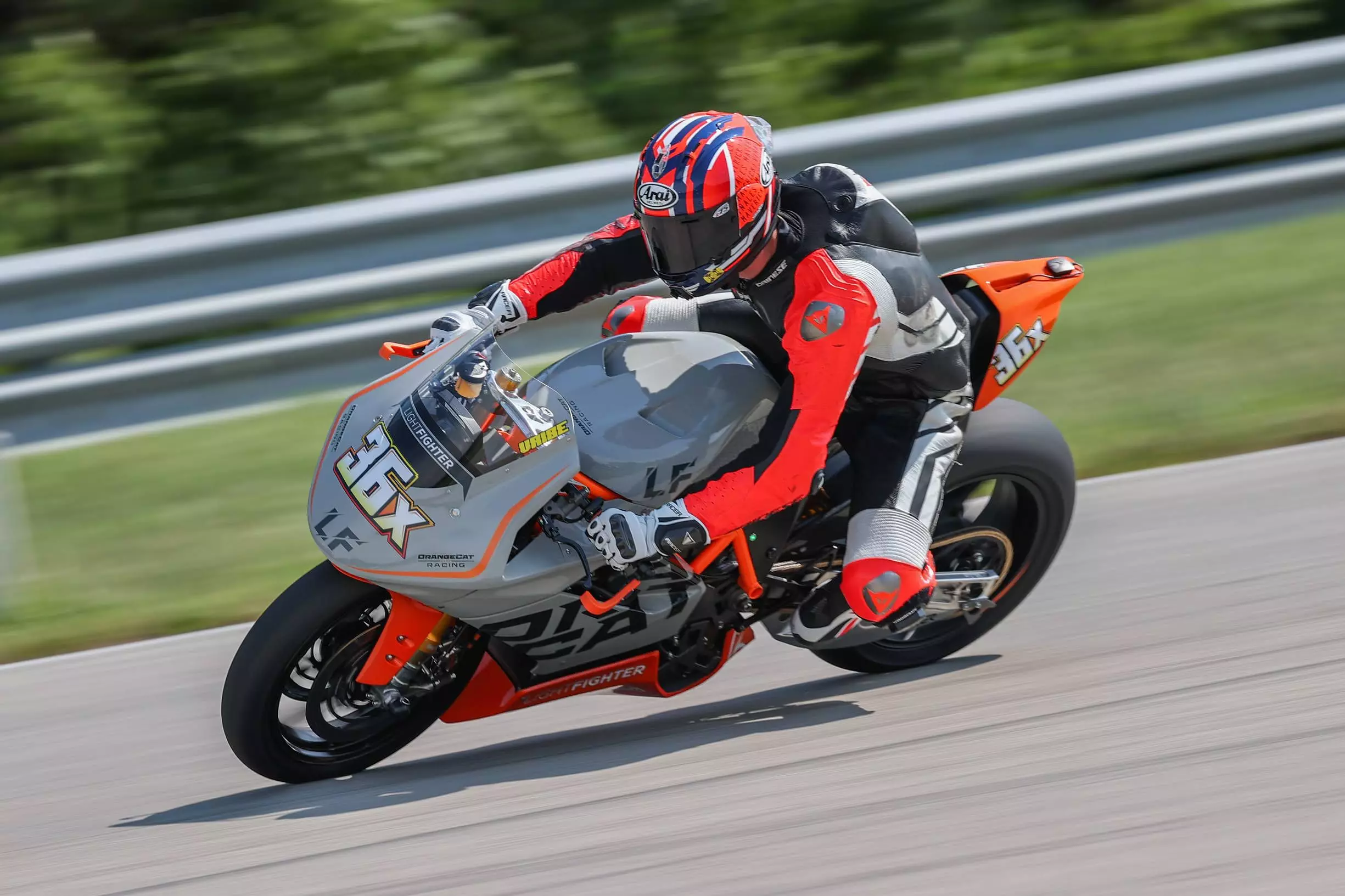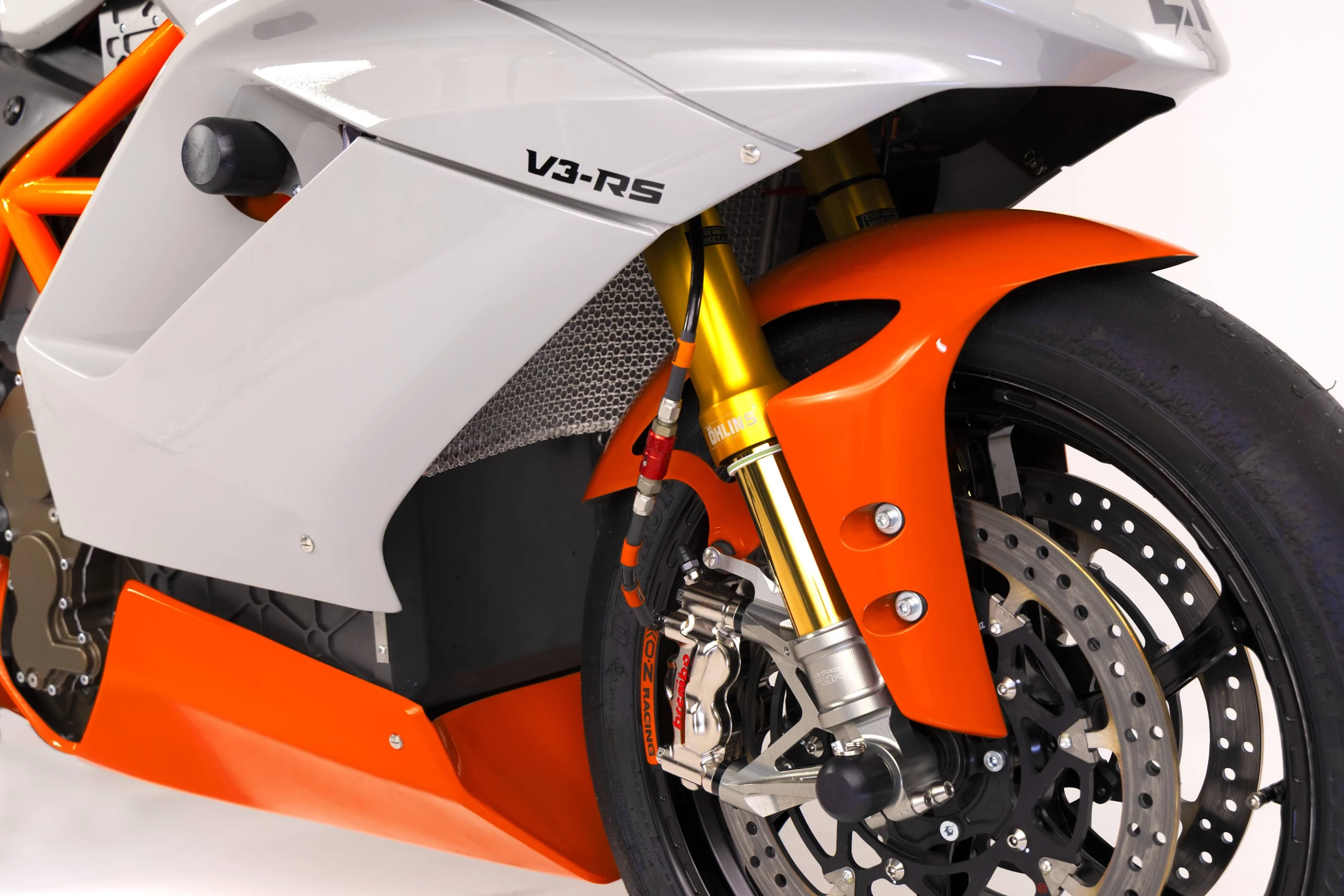When you take your street bike out for a spin at a racetrack, if you're smart, you don't fill it to the top with gas. You put just enough in the tank for the half-dozen laps that you'll do each session. More than that is simply unhelpful ballast.
California-based start-up Lightfighter has extended that principle to the development of two electric motorcycles aimed squarely at track use. It's given them just enough range to satisfy the club-level racers and track-day enthusiasts that it hopes to sell bikes to – and with that restraint, it has brought jaw-dropping performance.
The most powerful of Lightfighter's two prototypes is the fully faired V3-RS. It produces 154 hp (115 kW) and weighs just 399 lb (181 kg), the company says. And that's the ready-to-race weight, fully … umm … charged.
For a gas-fueled comparison, Ducati's latest V-twin superbike, the Panigale V2, is claimed to weigh just 4 lb (1.8 kg) less – but that's with no fuel in the tank. And it makes only 120 hp (88 kW). Ducati's four-cylinder equivalent, the Panigale V4, is much stronger than either, but it's also heavier, at 421 lb (191 kg), and again, that's before you add fuel.
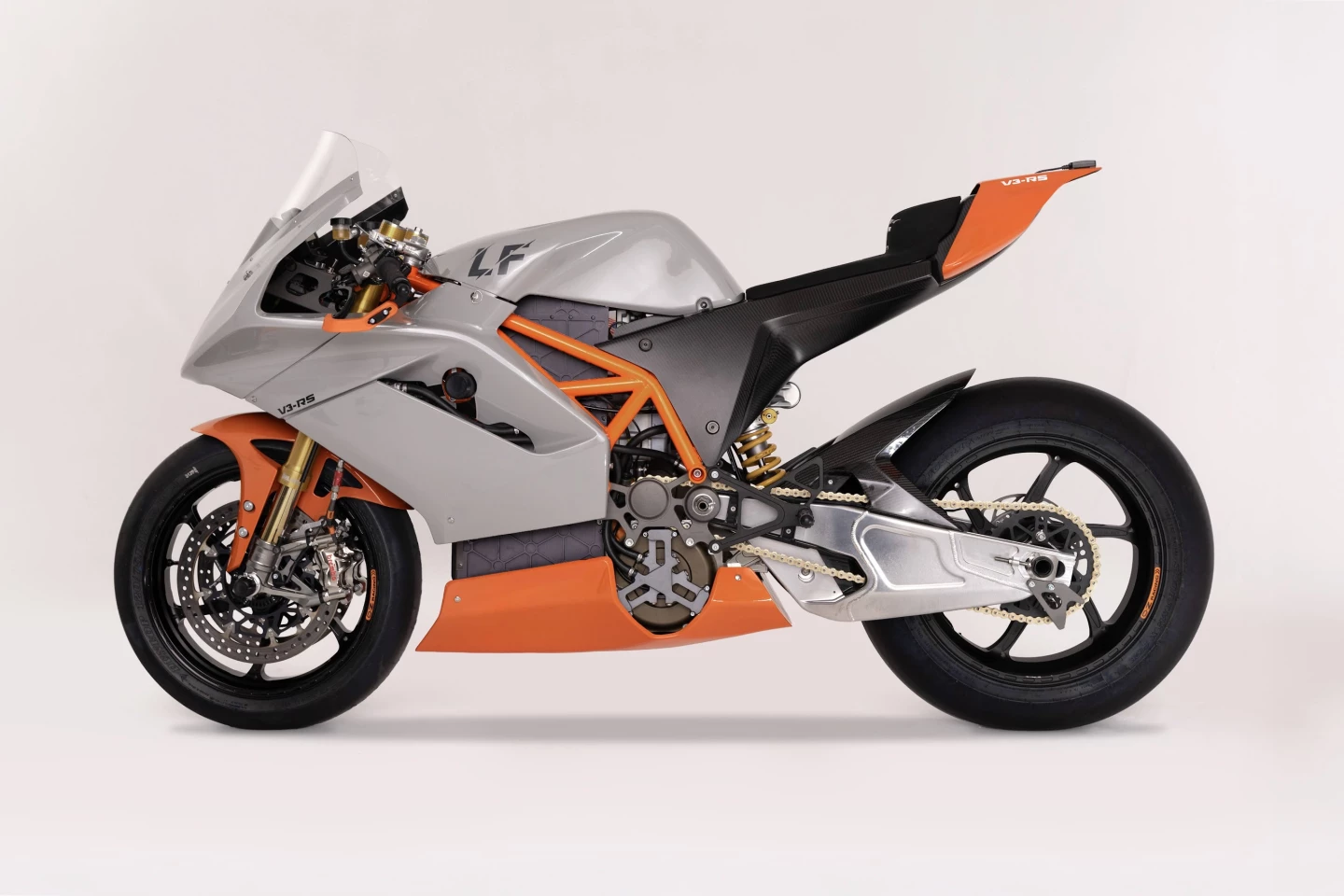
The Lightfighter is as powerful, while much lighter than the 575-lb (260-kg) behemoths raced in the MotoE World Championship (the premier international series for electric bikes) – and the 489-lb (225-kg) e-Ducati that would have replaced them had the class not been mothballed from next year.
More on point, the Lightfighter looks to be quick and light enough to give a non-pro as much speed and finesse as they'd ever get from any road-going superbike on the track. And that's without the other advantages of an electric powerplant – like always being in the right gear.
Lightfighter's CEO, Brian Wismann, says its superior specs are underpinned partly because of a more energy-dense battery pack, and partly by a focus on minimizing weight – helped by US circuits generally being tighter and less energy-demanding than the high-speed tracks used in the MotoE series.
The battery pack, sourced from Farasis Energy's research hub in California, can store just 12.5 kWh – enough to power the bike continuously at full throttle for about seven minutes straight, if you had enough runway.
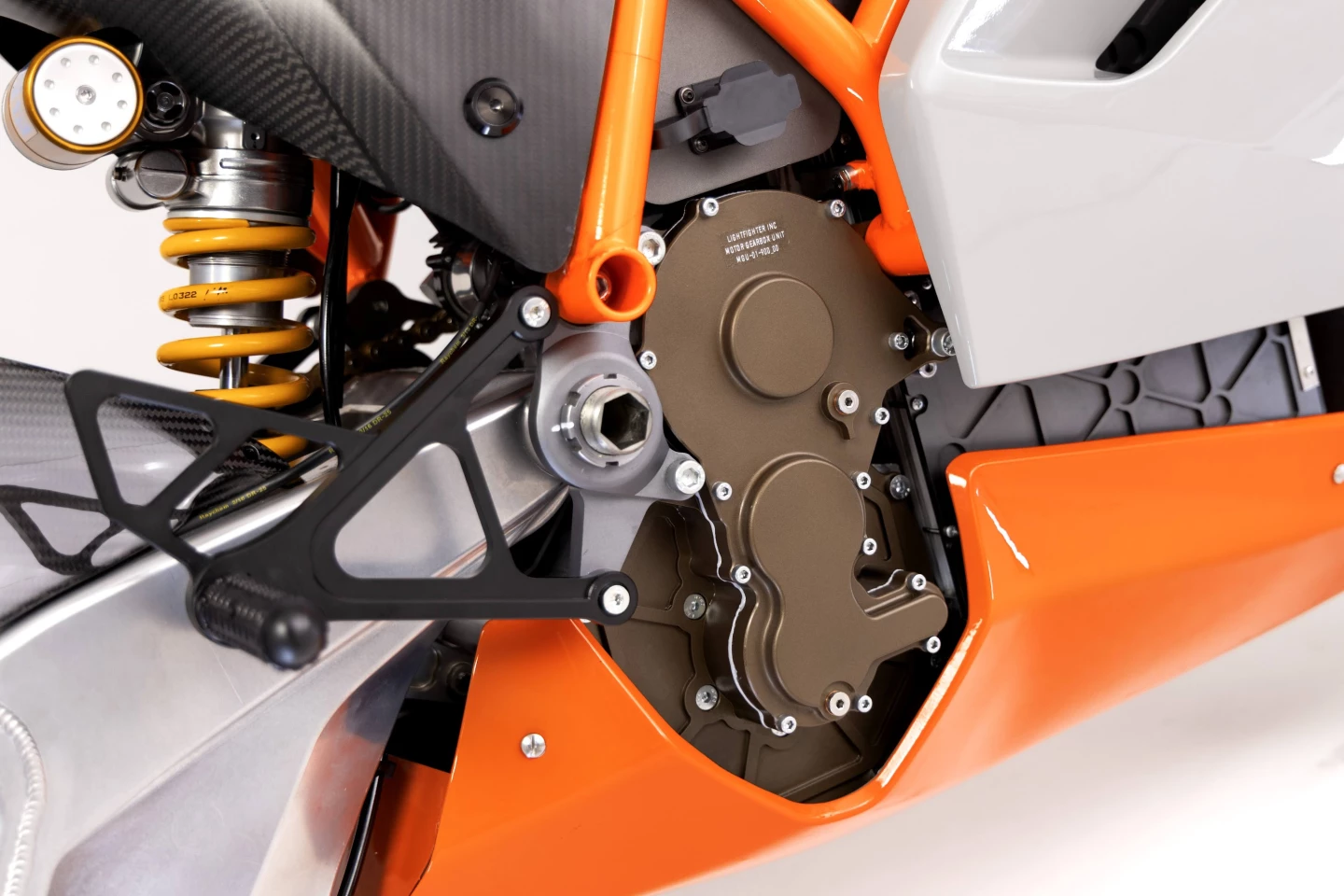
If you're thinking that's scanty, you've grossly underestimated the performance of a 400-lb, 150-hp motorbike, even on a big circuit like Australia's famed Phillip Island, one of the fastest grand prix tracks in the world.
There, a skilled rider might hold full throttle for about eight seconds on the main straight each lap, and another few seconds on the downhill straight to Stoner Corner – a shallow left-hander that can be taken at 150 mph (240 km/h) if you're game. On several visits to the track, I never have been. Then you're counting gears as you downshift while braking for the near-hairpin right-hander that follows.
On the Lightfighter, of course, there are no gears to change – its 120 lb-ft (162 Nm) of torque is available from zero rpm, pulling you out of the hairpin in the same gear that gets you to maximum speed on the straight.

That easy rideability is part of why Wismann thinks the Lightfighter could be not only a competitive electric racer against its gasoline-fueled alternatives, but also the best bike available for anyone riding for fun rather than profit.
There are also weight-distribution advantages from the compact powerplant, along with what Wismann describes as great handling in transitions – the rider doesn't have to battle the gyroscopic resistance of an internal combustion engine's heavier rotating parts.
A Lightfighter's battery, he says, can be recharged in an hour from the power available at typical US racetracks. "For a track day, it is possible for the rider to recharge between sessions. We have the ability to swap batteries, but have never done this at the track days or race events we've competed in," Wissman told New Atlas.
Among those events was an eight-lap AFM-sanctioned race at the 2.9-mile (4.67-km) Thunderhill Raceway East in Willows, California, in June. Brenden Ketelsen expertly rode the V3-RS and won – stretching the Lightfighter's endurance to the limit while turning a 1:50.026 time in the process.
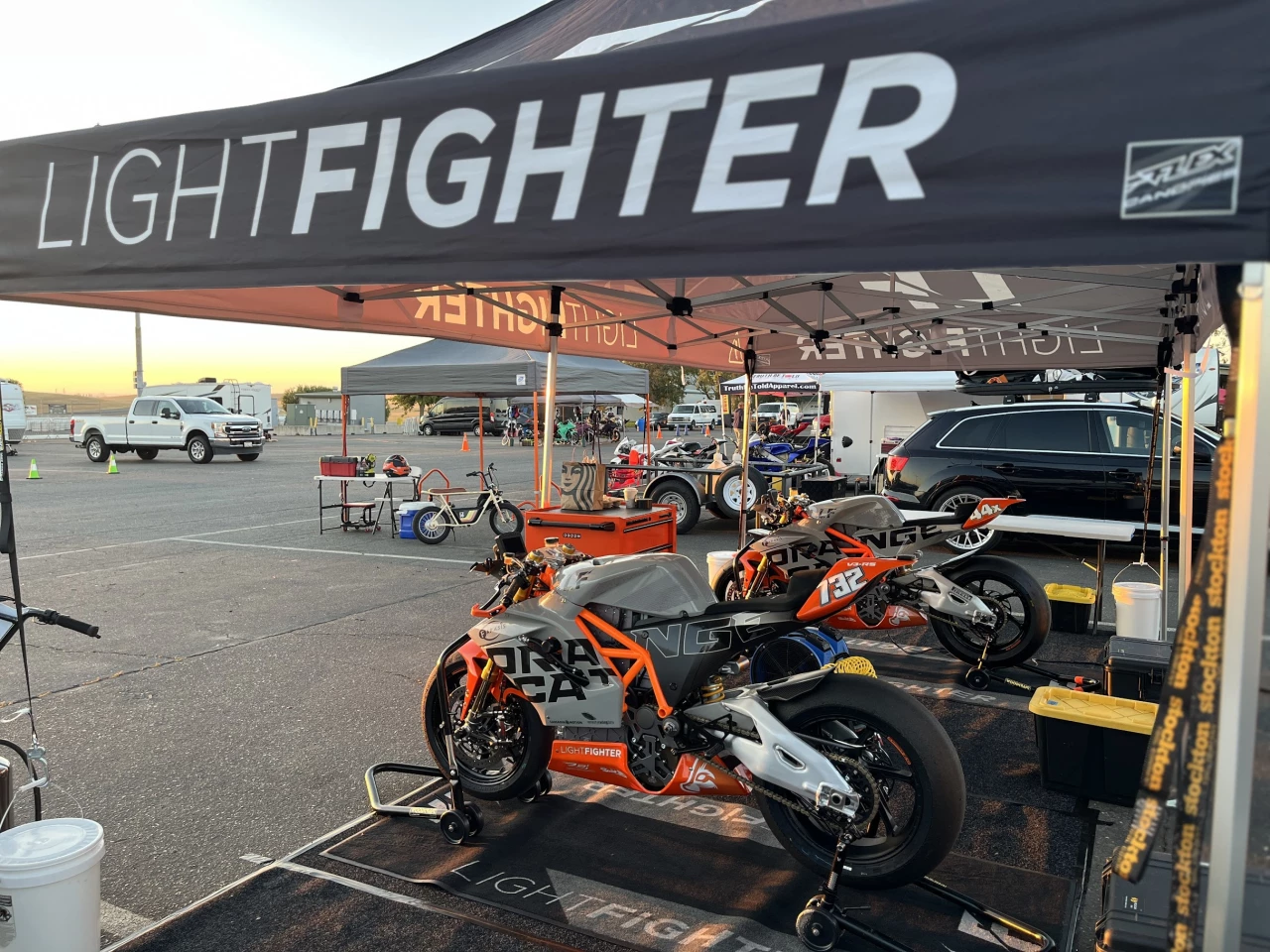
Lightfighter's other prototype, labeled the V3-RH, is a 135-hp (100-kW) super-naked with higher handlebars and no fairing, built for acceptance into the professional MotoAmerica Super Hooligan series next year.
The water-cooled motor for both bikes has been developed in collaboration with Ohio-based Parker Hannifin. It's set in a custom-built casing that also houses a 2:1 reduction gearset, which doubles its torque output before it reaches the drive sprocket.
The chassis and body parts will look familiar to motorcycle enthusiasts, with Oz Racing wheels, high-end Ohlins suspension, and Brembo brakes, all tied together by a tubular steel trellis frame drawn up by Lightfighter fabrication lead Ely Schless – who says he took a Yamaha R1 superbike as his starting point.
Rake and trail figures are an unexceptional 24.5 degrees and 100 mm, with a wheelbase of 56.5 inches (1,435 mm). Tires are 120/70-17 front and 200/60-17 rear, while the custom bodywork combines carbon fiber and fiberglass.

The third of Lightfighter's co-founders is chief technology officer Nick Lambert, whose background includes electric motor technology and nine years overseeing quality control and new-model introductions at Tesla.
Wismann left electric bike maker Zero Motorcycles in May after nine years supervising product development to devote himself to what began as a passion project.
He says the team is dedicated to raising the company's profile through racing while working toward a limited-production debut in 2027 – likely at a premium price. More powerful versions are in the pipeline.
As a long-time motorcyclist who has competed at club level, I find the prospect of such an electric racer enticing – partly because it sharpens the focus on exploring the limits of handling and grip, and partly because it would need a lot less TLC between outings than a gas-fueled track bike, a point Wismann readily endorses.
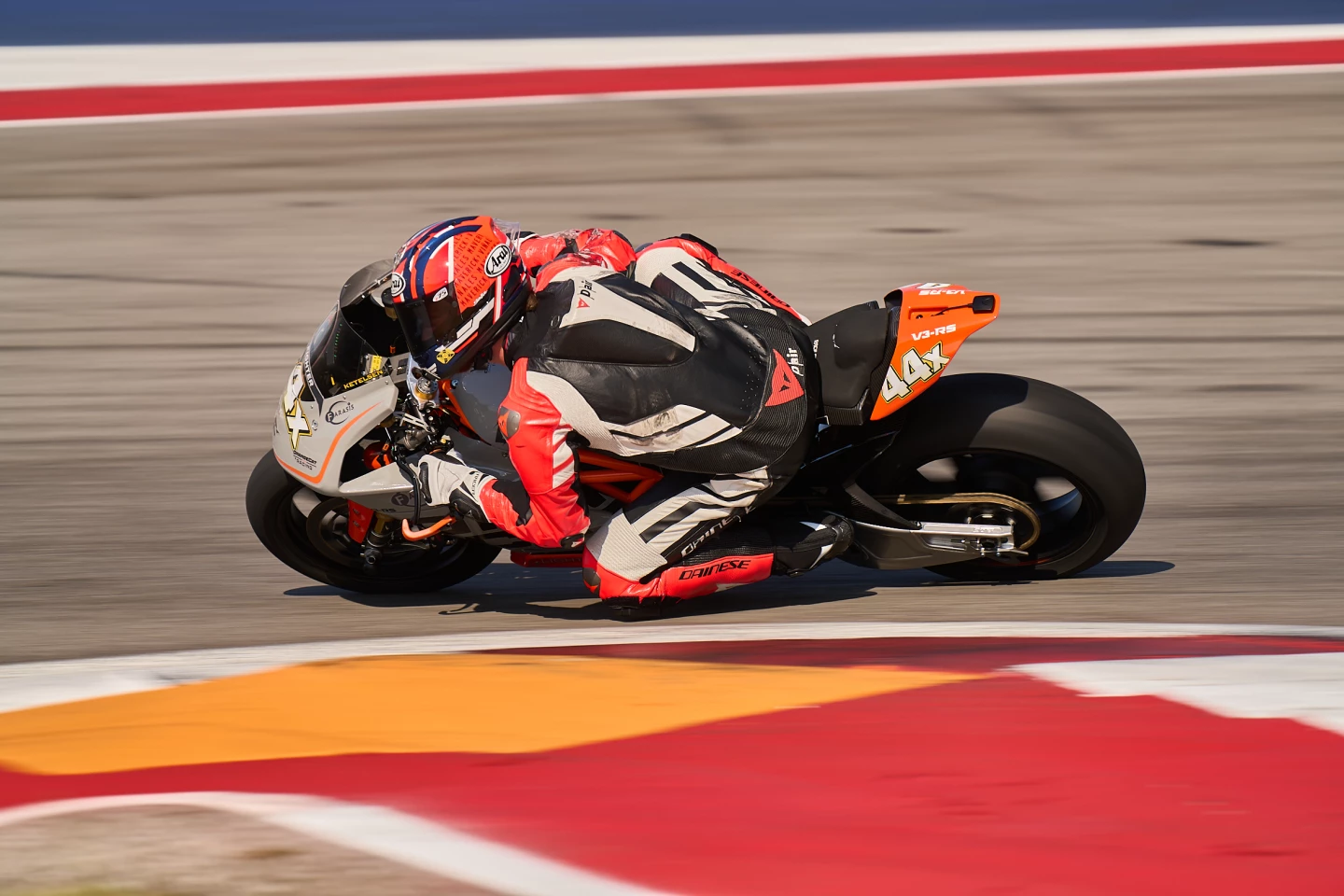
Could Lightfighter – and the imitators likely to follow – even raise interest in track riding, in a world where modern sportbike performance long ago outpaced what could be exploited prudently on public roads?
While acknowledging that some riders will always prefer the engagement that comes from clutching and shifting, Wismann believes an EV powertrain is the ideal solution for a track-focused motorcycle.
"The power delivery is smoother than any combustion engine, and the act of piloting the bike is much simpler and more confidence-inspiring," he told New Atlas.
"The Lightfighter is infinitely tunable to be the bike you want it to be. We can program it to behave like a 400, a 650 twin, a 600 four or a liter bike. It's a bike that can meet the rider where they are in their journey.
"We can clearly see that the next generation of motorcyclist will have learned to ride on e-bikes and small electric motorcycles. I think there is strong potential to expand interest in road racing by appealing to this younger generation of rider."
Yep, and they may pull in some older riders as well.
Source: Lightfighter
